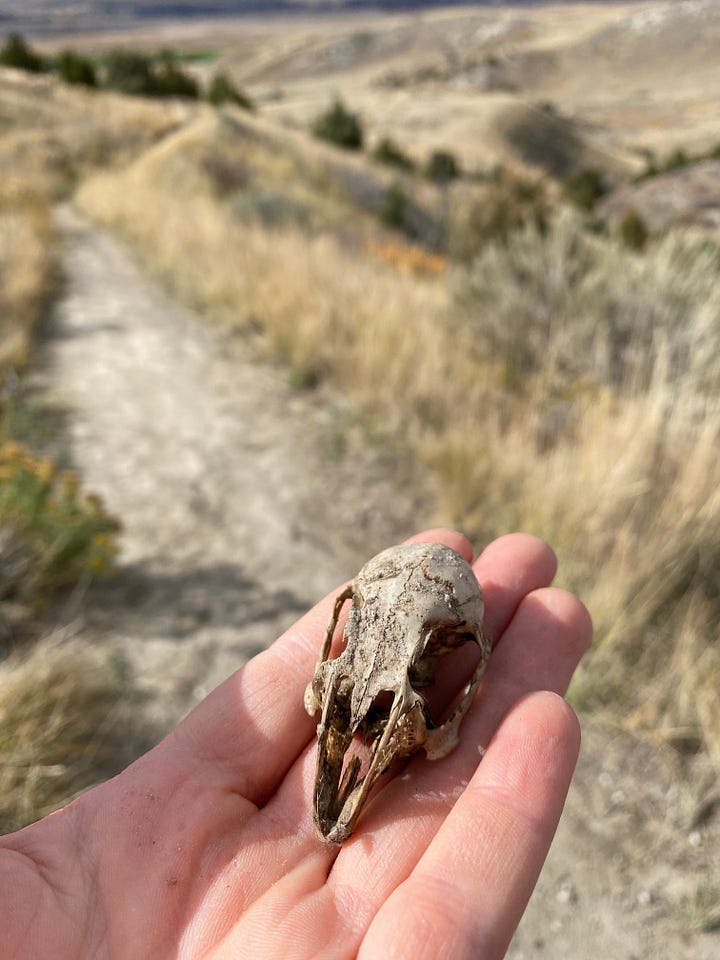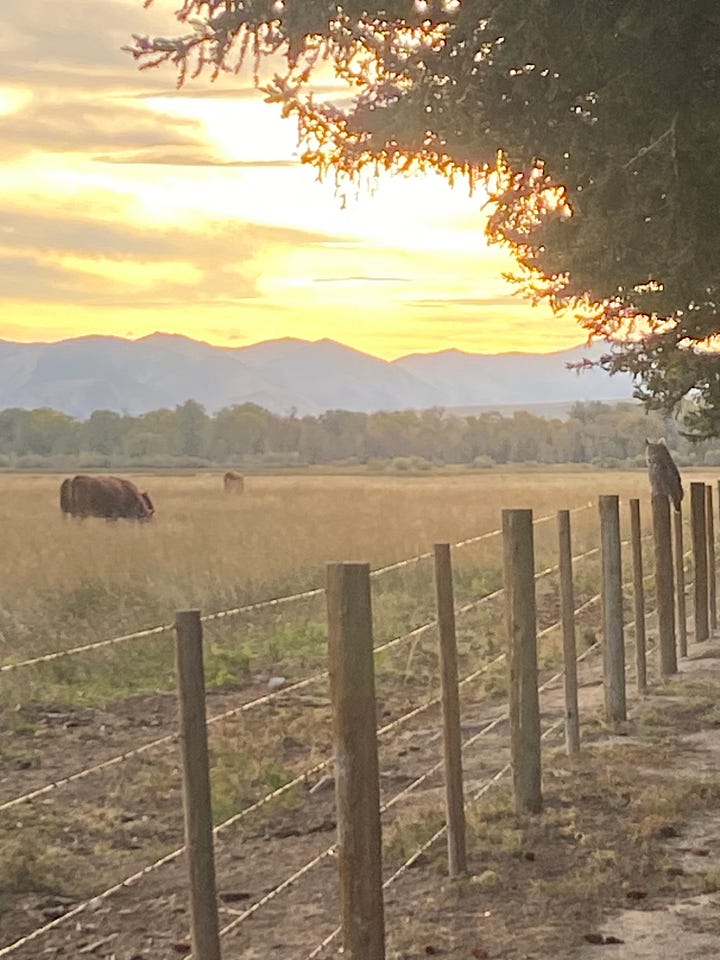On my first day in residence at The Dofe House, part of Aunt Dofe’s Gallery in Willow Creek, I made my first post on Substack. Since then, it’s been my honor to gain each one of you as a subscriber. I am truly thankful you are here, and I look forward to these writings each week.
To be one’s own broadcaster, publisher, publicist, and editor — it’s a whole other job on top of the actual writing. For any typos or gaffes in my writing, I own them fully. My work is typically created with the safety net of keen editors and colleagues. I miss working in a newsroom with my entire being. Yet, in the solitude that the Dofe House residency offers, I am experiencing a new form of comfort, that of personal reflection and self-confidence.
Each day that I am in residency, I learn a bit more about myself and the ecosystem around me. I find myself reflecting on the line from Twin Peaks, “The Owls are not what they seem,” … a menacing nod to the darkness in humanity and the mysteries of the forest.
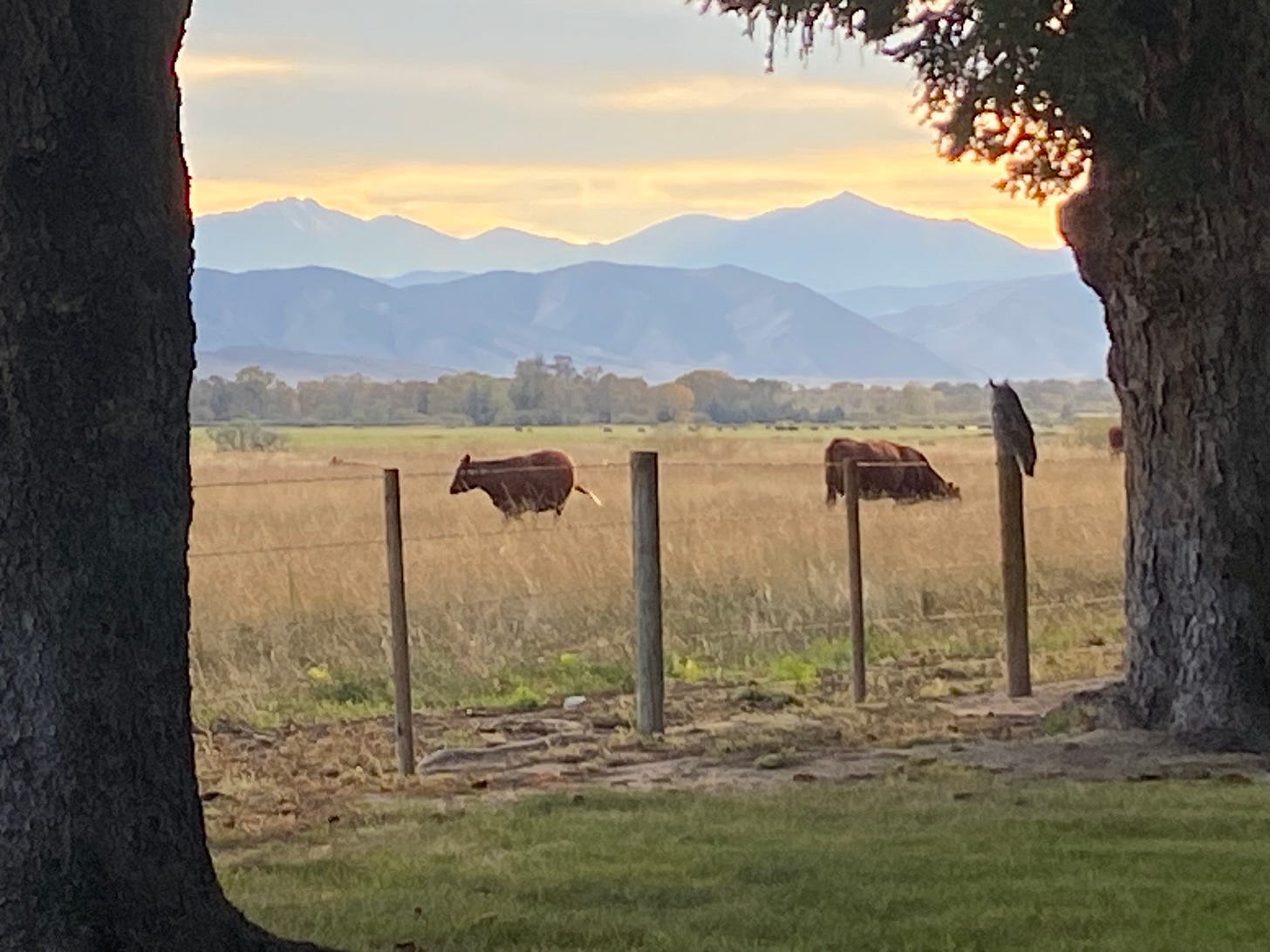
In a recent exchange with poet Charles Finn, author of “On a Benediction of Wind,” a collection of poetry paired with photography by Barbara Michelman, we pondered the use of AI technology to create poetry and great works of fiction — even journalism. Finn shared with me a poem yet to be released about being human, with all its faults and crevices. It was wonderful to have such trust from another, to have him share raw work with all its imperfections.
This conversation conjured up for me Mary Shelley’s “Frankenstein,” which I am currently listening to as an audiobook. There is an unforgettable moment Shelley penned where the creation by Dr. Frankenstein becomes real. The creator is repulsed by it, runs from it, and fools himself into thinking that the monster will go away. There's something to these AI beasts we have unleashed ... they are not human, yet by reflecting us, they become our nightmares.
“The different accidents of life are not so changeable as the feelings of human nature. I had worked hard for nearly two years, for the sole purpose of infusing life into an inanimate body. For this I had deprived myself of rest and health. I had desired it with an ardour that far exceeded moderation; but now that I had finished, the beauty of the dream vanished, and breathless horror and disgust filled my heart.”
-Dr. Frankenstein
Frankenstein’s creation will come to him much later, describing a desire for acceptance and repentance:
“Remember that I am thy creature; I ought to be thy Adam, but I am rather the fallen angel, whom thou drivest from joy for no misdeed. Everywhere I see bliss, from which I alone am irrevocably excluded. I was benevolent and good; misery made me a fiend. Make me happy, and I shall again be virtuous … Believe me, Frankenstein, I was benevolent; my soul glowed with love and humanity; but am I not alone, miserably alone?
-Frankenstein’s monster
Ahhh, the soul. That unseeable part that links us to all living beings. Humanity, in its cruelty and revolt, is also magnificent and intensely creative. Is it the soul that guides our creative bodies to make things no machine could reproduce? Surely, our minds are as irreplaceable as the mind of Mary Shelley.
Arts journalist Cory Walsh recently wrote about the pirating of thousands of books for AI technology, including the works of many Montana-based writers. Walsh reached out to Carrie LaSeur, an environmental attorney, published author and founding member of This House of Books in Billings, who cited a quote from Willa Cather: “A book is made with one’s own flesh and blood of years. It is cremated youth. It is all yours — no one gave it to you.”
“This is your life and your work and your art,” La Seur told the Missoulian. “And for most of us, something you feel incredibly passionate about and have worked, often in total obscurity and without compensation, to get into the world. And you have a right to expect that once it is in a published format that some protections attach to it.”
Walsh describes what AI does, which I admit was the first time I really felt threatened by the technology — not because of its quality (or lack thereof), but for the immense amount of information AI bots can process in seconds … things that could take us a lifetime to fully comprehend and master (though arguably AI has no understanding of these things, and the more information it receives the more jumbled it becomes):
“The chat programs work like an advanced version of the autocomplete function on a smartphone or Google Search. You type in a text prompt and it will respond. It can be used for research in that sense, although factual errors (called “hallucinations”) are common. Regarding books and authors, ChatGPT can give you a tight summary of David James Duncan’s novel “The River Why.” Supposing you want it to do some creative writing for you, it can also oblige. When prompted to produce a paragraph about downtown Missoula in the style of gonzo journalist Hunter S. Thompson, this is part of its answer:
“Dive bars pulsated with raucous live music, their patrons a wild amalgamation of bearded lumberjacks and inked-up bohemians, all chasing their own brand of escape. The air buzzed with an energy both enchanting and disorienting, a twisted carnival where the Grateful Dead's ghost could share a drink with Hemingway's spirit. In this sanctuary of anomalous harmony, Missoula's paradoxical heart beats to a rhythm only the truly deranged could ever hope to dance to.”
Asked to write a few sentences about a University of Montana Griz football game in the style of "A River Runs Through It" author Norman Maclean, the program applied a spiritual phrasing to a secular activity: “In the dimming Montana twilight, the Griz football game unfurled as an ancient drama, played out on a sacred field where generations of hopeful souls had gathered to chase glory.”
— Cory Walsh, Missoulian
Perhaps we have not yet reached that moment when we grasp the magnitude of what we have created, but it’s nearly Halloween, so it’s a good time to be pontificating on monsters.
Speaking of Monsters, here are a couple zucchinis my mother and I grew this summer — hers in Sheridan, Wyo. and mine in Billings, Mont., found at the end of the season hiding under the vine leaves.
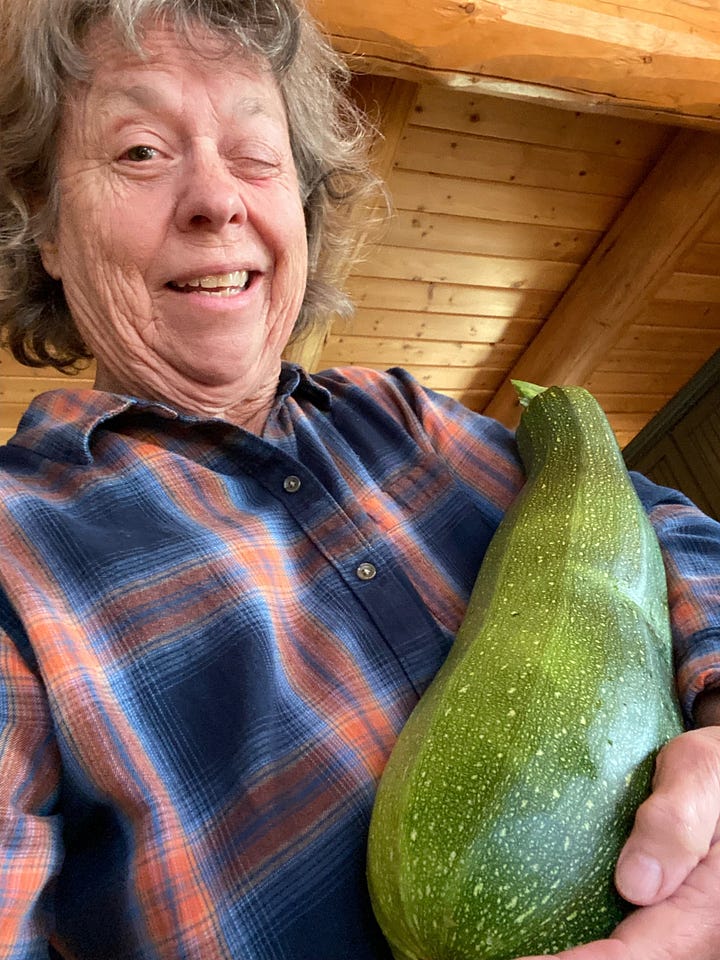
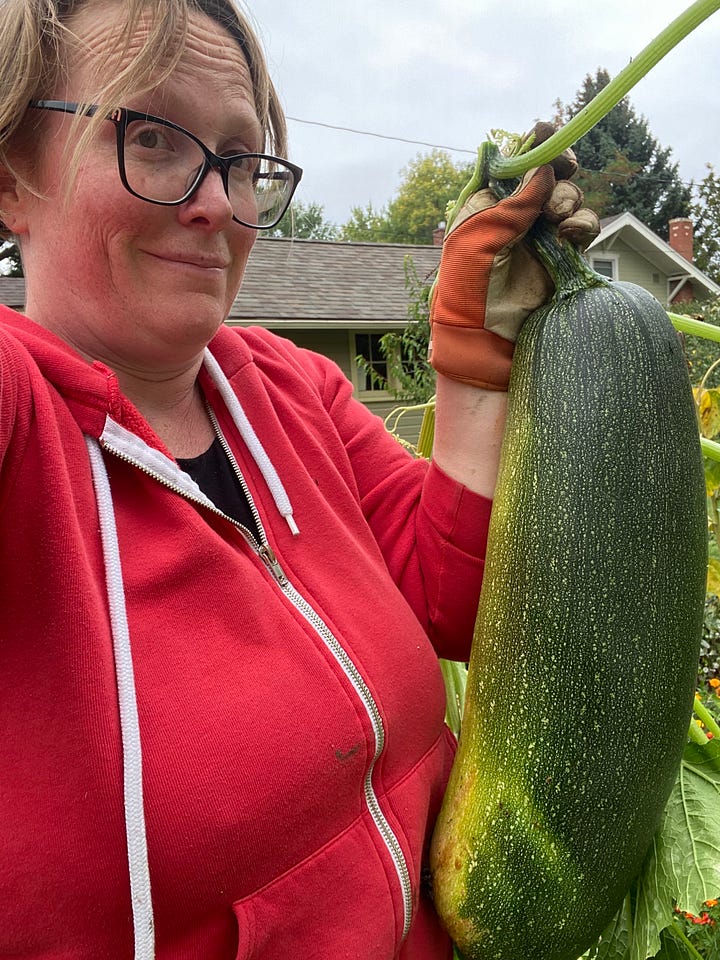
Subscription price updates
I want my work to always be accessible, which is why Substack is such a unique publishing platform. Readers can choose how they want to invest, and I am offered an easy way to distribute my work to subscribers.
When I started the account, Substack recommended a monthly fee of $8. I didn’t think too much of it, and wanted to set my fee a little bit lower, so I landed at $7. As my platform has grown, I wanted to set a rate that felt comfortable to me, not to some algorithm. So, I have changed the monthly subscription to the minimum price allowed by Substack: $5 per month ($60 per year). Founding subscription rates will remain $250.
I will always keep my writing accessible and free, and I am so grateful to everyone for their support as I launch this next step in my writing career.
For paid subscribers, I will be adding perks, including poetry, and for yearly subscribers I will send the occasional hand-written letter. Founding subscribers will also receive letters, expanded access, and trinkets from the prairie.
I don’t want to be a dog-and-pony show, so this will be my only email about subscription costs, as I still find it uncomfortable to ask readers to pay me directly for my work. Every contribution to this little newsletter goes a very long ways.
I thank every single one of you for being here.
With love and hugs from the Prairie,
-AP
